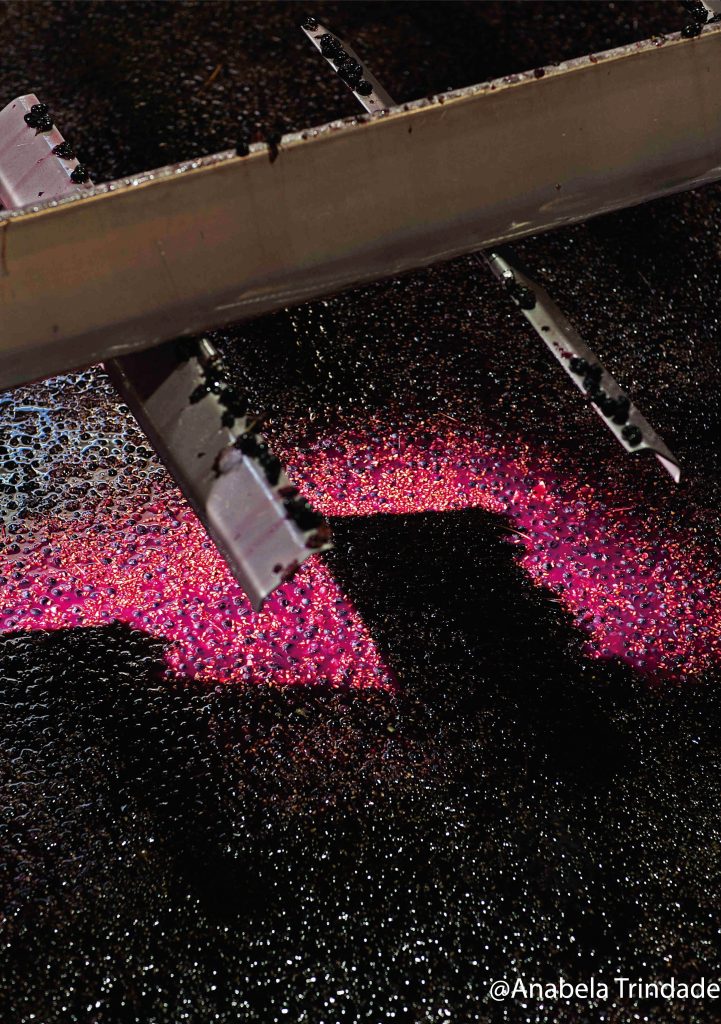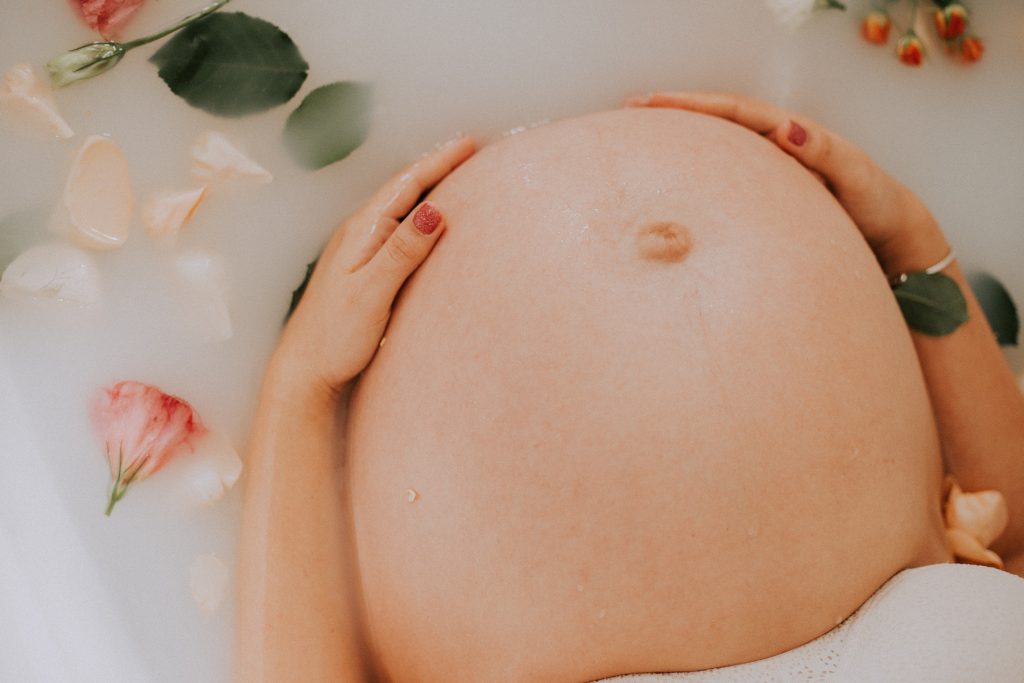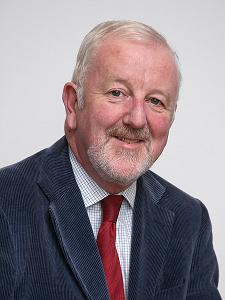By Shaun R. McCann
The making of wine is an organic process and has similarities with pregnancy. Many characteristics of a wine are determined during the growing period. Mineral deficiencies can inhibit full development of the grape. Fungal infection or hailstones can destroy a crop shortly before harvest, just as intrauterine infection can be devastating during a pregnancy. Viral infections can affect grapes and the growing foetus. When to harvest/deliver requires careful consideration. As the time to harvest approaches oenologists (and gynaecologists) become agitated. A lot of things can happen in the remaining few days. Decisions made in these few days can have deleterious or beneficial effects on the outcome. Oenologists will do two things: measure the sugar content of the grapes and taste the grape juice. The oenologist has many scientific aids available to help in making the decision to harvest, but there is no substitute for experience and knowledge of the soil and previous behaviour of that clone of grapes. Similarly, the obstetrician may have many tools, such as electronic foetal heart monitoring, but there is no test or machine that can replace experience. Harvesting too soon or too late will result in a suboptimum wine. Delivering a baby too early or too late may result in prematurity or foetal distress. The oenologist and the obstetrician may not be fully aware of the final results for many years after all the work is done.

Since the documentation of the foetal alcohol syndrome (FAS) by Jones and Smith in 1973 women who consume a very moderate amount of wine e.g. a glass of wine with their evening meal, have become pariahs. There is no doubt that the FAS exists and causes devastating toxicities to infants including irreversible brain damage and growth retardation. However, the deleterious effects of alcohol on the developing foetus seem to be maximal in the first trimester and diminish thereafter. So, it is probably best for pregnant women to desist from alcohol during the first trimester of pregnancy but the evidence that moderate wine consumption (1–2 glasses of wine per week) during the second and third trimester are harmful is difficult to elicit. I have asked a number of distinguished Professors of Obstetrics and Gynaecology to provide me with the evidence that moderate wine consumption by pregnant women, who are otherwise healthy and well fed is harmful to their health or that of the foetus, but so far, I have received no satisfactory reply. Meta-analyses conclude that the evidence that moderate wine consumption is harmful to foetal development is sparse. What about the effects of wine consumption on fertility? Published results are confusing. One study found that a moderate intake of wine shortened the time to pregnancy in couples not using any form of contraception. As they say, ‘Whether this is an effect of wine itself or the characteristics of the wine drinker is not known’. Perhaps another explanation is that after a glass of wine they felt in the mood!

Another study claimed that it is not possible to demonstrate any deleterious effect on socioemotional difficulties or cognitive deficits on 5-year-old children whose mothers had engaged in light wine drinking during pregnancy. So, it looks like light wine consumption during pregnancy has no measurable deleterious effects on the baby. However, as Antonio said in William Shakespeare’s The Merchant of Venice: ‘The devil can quote scripture for his purpose’. Although the data are conflicting, probably the best advice to give pregnant women is to abstain from alcohol during the first trimester and if she must, then limit wine consumption to a couple of glasses per week during the second and third trimester. Some authorities e.g. The CDC (Center for Disease Control) in Atlanta, Georgia, in the United States, and some national bodies recommend total abstinence from alcohol during pregnancy based on little or no evidence. Luckily, it is not a decision I will ever have to make!
I presume we all worry that we will end up with some form of dementia if we live long enough. There may be some good news. Ruth Peters and colleagues from Imperial in London suggest that moderate alcohol consumption in early adult life might offer some protection from dementia. Sigfried Weyerer and colleagues, in the same journal in an article entitled, ‘Current alcohol consumption and its relationship to incident dementia: results from a 3-year follow-up study among primary care attenders aged 75 years and older’, concluded that light-to-moderate alcohol consumption is inversely related to incident dementia. Let’s hope it’s true and even if it isn’t, a glass of wine or two daily helps to make the world bearable especially in these turbulent times.
One may well be skeptical about the claims made for the purported health benefits of wine, but beware of questioning Greeks bearing gifts, and surely nobody can, in good faith, deny the mood enhancement that moderate wine drinking can bring? True, when it is abused it can have disastrous and life-destroying consequences, especially when in conjunction with addictive tendencies. However, when consumed in sensible quantities, it can be and is, as the Greeks realized, one of life’s great pleasures.

Shaun R. McCann
MB, FRCPI, FRCPEdin, FRCPath. Hon.FTCD. Hon Life Member EBMT. Hon Life Member EHA
Recipient of EHA Education and Mentoring Award June 2019.
Professor Emeritus of Haematology and Academic Medicine, St James’s Hospital and Trinity College, Dublin.
- DOB 1-10-46
- Graduate of University College Dublin, 1970, MB, B. Ch, B.A.O.
- Specialist Medical Fellow University of Minnesota, U.S.A.1974-76
- Lecturer/Senior Lecturer in Haematology Trinity College Dublin, 1976 -1984
- Consultant Haematologist and Head of Department St James’ Hospital/TCD 1984-2009.
- Performed the first successful allogeneic bone marrow transplant for leukaemia in Ireland in 1984.
- Developed a molecular haematology research laboratory in SJH.
- A test to measure chimaerism using PCR of STRs was developed by Dr Mark Lawler, Professor Pete Humphries and myself and was widely used internationally by Stem Cell Transplant Teams.
- Introduced an art intervention (Open Window) into the stem cell transplant unit and this study, of which I was the PI, was published in 2011. The study played a major role in the choice of QoL as the ‘theme’ for the European Hematology Association (EHA) in 2012-2013.
- Appointed George Gabriel Stokes Professor of Haematology @ Trinity College Dublin, 1995-2010.
- Vice-President of IACRLRLD (International Association for Comparative Research on Leukemia and Related diseases).1994-1997.
- Appointed National Medical Director, Blood Transfusion Service (by invitation of the Minister for Health, Michael Noonan TD) 1995-1996 during the Hepatitis C outbreak.
- First President of the Haematology Association of Ireland.
- Author of over 200 articles in peer-reviewed medical journals, numerous book chapters and two medical textbooks.
- Clinical Cases Uncovered (CCU), Haematology, Wiley/Blackwell. ISBN 978-1-4051-8322-2
- This is currently being developed as an interactive platform by EHA.
- Appointed Professor of Academic Medicine, School of Medicine, Trinity College Dublin 2006- 2011
- On the Editorial Board of Bone Marrow Transplantation and Hematology and reviewer for The British Journal of Haematology, Blood, The Journal of Blood and Bone Marrow Transplantation, Cancer, Bone Marrow Transplantation.
- Author of ‘invited editorials’ on Wine and Haemopoietic Cell Transplant (HCT) for the journal Bone Marrow Transplantation since July 2018.
Awards
- 1970. O’ Ferrall Gold Medal in Surgery, St Vincent’s Hospital, Dublin.
- 1976-77 Registrar’s prize RAMI (Royal Academy of Medicine in Ireland), Section of Pathology.
- 1986 St Luke’s Lecture, RAMI.
- 2011 Guest speaker Biological Society, TCD.
- 2016 Guest lecturer Gemelli Hospital, Rome, Italy.
Books
- An Immodest Proposal-Wine and Health (under the pseudonym Giovanni Morelli) ISBN 978-1-78280-207-5.
- A history of Haematology: from Herodotus to HIV. Oxford University Press. ISBN 978-0-19-871760-7
- Blood Matters. European Hematology Association June 2019. ISBN 978-90-823759-1-6
Selected puplications
Molecular Haematology
- M. Lawler, S.R.McCann, E Conneally and P Humphries. Chimaerism following allogeneic bone marrow transplantation: detection of residual host cells using the polymerase chain reaction. Br J Haematol 1989, 73: 201-210.
- M. Lawler, P Humphries and S.R.McCann. Evaluation of mixed chimaerism by in vitro amplification of dinucleotide repeat sequences using the polymerase chain reaction. Blood 1991, 77: 2504-2514.
- P.V. Browne, M Lawler, J O’Riordan, P Humphries and S.R. McCann. Early detection of leukaemic relapse after bone marrow transplantation.
- Bone Marrow Transplantation 1991, 7: 167-169.
- P.V. Browne, M Lawler , P and S.R.McCann . Donor-cell leukemia after bone marrow transplantation for severe aplastic anemia.
- N Engl J Med. 1991;325:710–713.
- S.R. McCann, M Lawler and A Bacigalupo. Recurrence of Philadelphia chromosome-positive leukemia in donor cells after marrow transplantation for chronic granulocytic leukemia. Leuk Lymphoma. 1993; 10: 419-425.
- S.R McCann and M. Lawler. Mixed Chimaerism; detection and significance following BMT. Bone Marrow Transplantation. 1993, 11: 91-94.
- S McCann and E Wright. Donor cell leukemia: perhaps a commoner occurrence than we thought. Bone Marrow Transplantation. 2003; 32:455-457.
- Hertenstein B, Hambach L, Bacigalupo A, Schmitz N, McCann S, Slavin S, Gratwohl A, Ferrant A, Elmaagacli A, Schwertfeger R, Locasciulli A, Zander A, Bornhäuser M, Niederwieser D, Ruutu T; Chronic Leukaemia Working Party of the European Group for Blood and Marrow Transplantation. Development of leukemia in donor cells after allogeneic stem cell transplantation–a survey of the European Group for Blood and Marrow Transplantation (EBMT). Haematologica. 2005. 90 (7): 669-675.
Leukaemia
- N Gardiner, M Lawler, J O’Riordan, M De Arce, P Humphries and S.R. McCann. Persistent donor chimaerism is consistent with disease-free survival following BMT for Chronic Myeloid Leukaemia. Bone Marrow Transplantation. 1997, 20; 3: 235-241.
- O’Riordan J; GardinerN; OMeara A; Molloy K; Lawler M; Stallings R; McCann S.R Immunotherapy for Relapsed Leukaemia. British Journal of Cancer, 1998, 78: 127-127
- N Gardiner, M Lawler J O’Riorda, J.M De Arce and S.R. McCann. Monitoring lineage specific chimaerism allows early prediction of relapse following donor lymphocyte infusions for relapsed chronic myeloid leukaemia. Bone Marrow Transplantation.1998, 21: 711-716
- N Gardiner, S.R. McCann, J O’Riordan, M Lawler. Chimerism following Donor Lymphocyte Infusion for Chronic Myeloid Leukemia. Blood. 1999, 93: 2748-2749
- S.R. McCann, K Gately, E Conneally and M lawler. Molecular response to Imatinib Mesylate following relapse after allogeneic SCT for CML. Blood 2003, 101; 3: 1200-1200.
- D O’Shea, G Crotty, P Carroll, E conneally, S McCann and M.J. Neat. Clonal karyotypic abnormalities in philadelphia negative cells of CML patients treated with Imatinib: is it underreported and does it have any clinical significance? Br J haematol. 2004. 123 (3): 367-369.
- P.J. Hayden, F Keogh, M ni Chongaile, M Carroll, M Crowley, N Fitzsimon, N Gardiner, E Vandenberghe, J O’Riordan and S.R. McCann. A single-centre assessment of long-term quality of life status after sibling allogeneic stem cell transplantation for chronic myelid leukaemia in chronic phase. Bone Marrow Transplantation. 2004;34: 545-556.
- S.R. McCann. Chronic Myeloid Leukaemia: a paradigm for malignancy or just a strange disease. Sultan Qaboos Univ Med J 2012, 12; (4): 422-428.
Aplastic Anaemia
- A Locascuilli, L van.t;Veer, A Bacigalupo, J hows, M.T. van Lint, E Gluckman, C Nissen, S McCann, I Vossen, H Schrezenmeier, W Hinterberger, and A Martin. Treatment with marrow transplantation or immunosuppression of childhood acquired severe aplastic anaemia. Bone Marrow Transplantation 1990, 6; 3: 211-217.
- J Marsh, G Socie, H Schezenmeier, A Raghavachar, A Tichelli, Pljungman, S.R. McCann, P Marin, J.M. Hows, A Bacigalupo. EBMT working Party for Severe Aplastic Anemia. Haemopoietic growth factors in Aplastic Anaemia: a cautionary note. Lancet 1994, 344; 8916: 172-173.
- S.R. McCann, A Bacigalupo, E Gluckman, W Hinterberger, J Hows, P Ljungman, P Marin. Graft rejection and second marrow transplants for acquired Aplastic Anaemia.EBMT WP for SAA. Bone Marrow Transplantation 1994, 13: 233-237.
- Aplastic Anemia: Pathophysiology and Treatment. Eds H Schrezenmeier and A Bacigalupo. HLA-identical sibling bone marrow transplantation to treat Severe Aplastic Anemia. S.R.McCann, J Passweg, R Storb, and J Deeg. Cambridge University Press. 1999.
- A Tichelli, G Socie, J Marsh, R Barge, N Frickhofen, S McCann, A Bacigalupo, J Hows, P Marin, D Nachbaur, A Symdonidis, J Passweg and H Schrizenmeier, EBMT working party for Severe aplastic Anemia. Outcome of pregnancy and disease course among women with Aplastic Anemia treated with Immunosuppression. Ann Int Med 2002; 137: 164-172.
- C. Marsh, S.E. Ball, P Darbyshire, E.C.Gordon-Smith, A.J. Kiedan, A Martin, S.R. McCann, J Mercieca, D Oscier, A.W, Roques, J.A. Yin. Guidelines for th diagnosis and treatment of acquired aplastic anaemia. Br J Haematol 2003, 123; (5): 782-801.
- D O’Donghaile, P. J. Hayden, S. L. McCarron, E. M. Doyle, M. Lawler, P. V. Browne, E. Conneally, E. Vandenberghe, S. R. McCann. Marrow aplasia developing 13 years after HLA-identical sibling allogeneic transplantation for chronic myeloid leukaemia: successful treatment with antithymocyte globulin and peripheral blood stem cell infusion from the original donor. European Journal of Haematology. 2006, 76; 3: 258-260.
- Lawler M, McCann SR, March JC, Ljungman P, Hows J, Vandenberghe E, O’Riordan J, Locasciulli A, Socie G, Kelly A, Schrezenmeier H, Marin P, Tichelli A, Passweg JR, Dickenson A, Ryan J, Bacigalupo A; Severe Aplastic Anaemia Working Party of the European Blood and Marrow Transplant Group. Serial chimerism analyses indicate that mixed haemopoietic chimerism influences the probability of graft rejection and disease recurrence following allogeneic stem cell transplantation (SCT) for severe aplastic anaemia (SAA): indication for routine assessment of chimerism post SCT for SAA. J Haematol. 2009; 144(6):933-4
- A Piccin, S McCann, G Socie, R Oneto, A Bacigalupo, A Locasciulli, J March, H Survival of patients with documented autologous recovery after SCT for severe aplastic anaemia: a study by the WPSAA of the EBMT. Bone Marrow Transplantation. 2010; 45 (6): 1008-1013.
- Quality of Life in treatment of Cancer/Haematological Malignancies.
- McCabe C, Begley C, Collier S, McCann S. Methodological issues related to assessing and measuring quality of life in patients with cancer: Implications for Patient Care. European Journal of Cancer Care, 2007.17(1): 56-62.
- Denis Roche, Philip Napier, Brian Maguire and Shaun McCann. A clinically useful artwork? Between a Dialogical and a Relational Approach to art in a clinical environment. The International Journal of the Arts in Society. 2008. vol 3
- F Hegarty, C McCabe, D Roche and S McCann. Using multimedia technology to help combat the negative effects of protective isolation on patients: The Open Window Project-an engineering challenge. Journal of Visual Communication in Medicine. 2009,32; 3:72-77.
- McCabe C, Roche D, Hegarty F, McCann S. Open Window’: a randomized trial of the effect of new media art using a virtual window on quality of life in patients’ experiencing stem cell transplantation Psycho-Oncology. 2011, doi. 1002/pon.2093.
- S.R. McCann. Can an art intervention influence the quality of life in hospitalized patients? Haematologica, 2013, 98 (1): 4-6.
- C Chomienne, M Guenova, A Hagenbeek, C Lacombe, S McCann, S Salek, J Geissler, I van der Beek. Quality of Life in Haematology: EHA theme of the year…and years to come. Haematologica 2013, 98 (1): 2-3.
- Shaun R. McCann. Can we influence the ‘quality of life’ for patients in hospital? Health Environments Research and Design Journal. 10 (1): 170-171. 2016.

